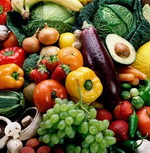|
Magnesium – Essential In Cellular Energy ProductionMagnesium is both a chemical element with symbol Mg and atomic number 12 and a mineral. The mineral is the fourth most abundant cation in the human body, with approximately 50-60% of the mineral found in the bones, and the remainder found equally distributed between muscle and other soft tissue. Most of the mineral is in the cells with about 1% in extracellular fluid.
The mineral is involved in more than 300 types of enzyme assisted reactions in the body, which includes DNA and protein synthesis. In the mitochondria, which is the energy production power plant of the cell, the mineral is essential for the production of ATP (adenosine triphosphate), the universal energy source for all cells, without the mineral these cellular activities come to a halt. The mineral also participates in glycolysis, muscle contraction and blood clotting. The mineral also helps the muscles of the walls of arteries to relax, helping to prevent a rise in blood pressure. Dietary Recommendations The recommended dietary allowance (RDA) for adults aged 19-30 years is 400 milligrams/day for men and 310 milligrams/day for women. The RDA for adults 31-70 years for men is 420 milligrams/day and for women 320 milligrams/day. Sources of the Mineral The mineral is mostly obtained in the diet from plant sources. Good sources of the mineral are vegetables such as potatoes and spinach, and whole grains, as well as beans, tofu and certain types of seafood. Refined and processed foods are not good sources of the mineral, fresh food sources are best.
Too Much or Too Little Mineral Deficiency of magnesium termed hypomagnesemia alone is rare. It does occur however with kidney disease, alcoholism, prolonged diarrhea, those that use some sort of diuretic drugs, as well as those with chronically poor diets of which those who abuse alcohol are a part of. Symptoms of the deficiency include loss of appetite, nausea, and weakness, and as times progresses muscle cramps, irritability, and mental confusion, along with disturbances in heart rhythm, which if these continue can result in death. Those with too much of the mineral termed hypermagnesemia generally occur in those with kidney failure, with symptoms of nausea and general weakness.
For other information on nutrition some great references are: • Nutrition – Fourth Edition by Paul Insel, Don Ross, Kimberley McMahon, and Melissa Bernstein • The Vitamin Alphabet – Your guide to vitamins, minerals and food supplements by Dr. Christiana Scott-Moncrieff MB, CHB, MFHOM
Nutrients In Food
|







